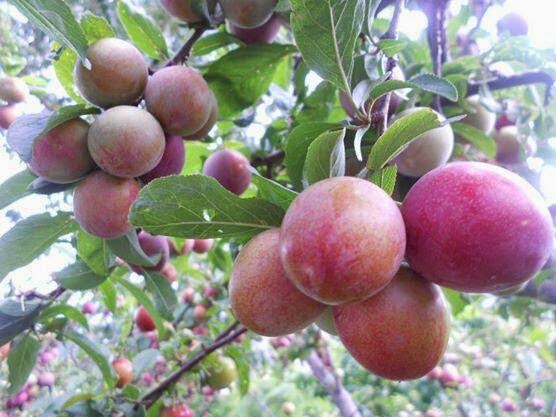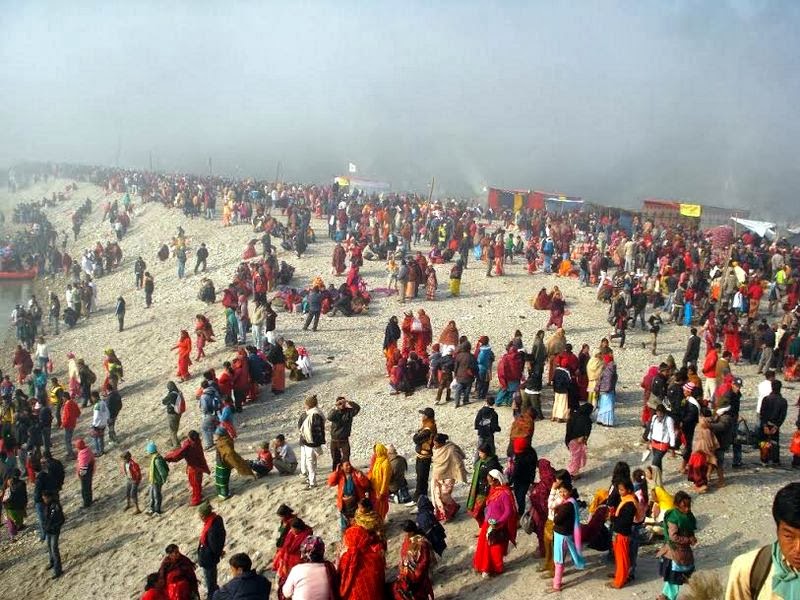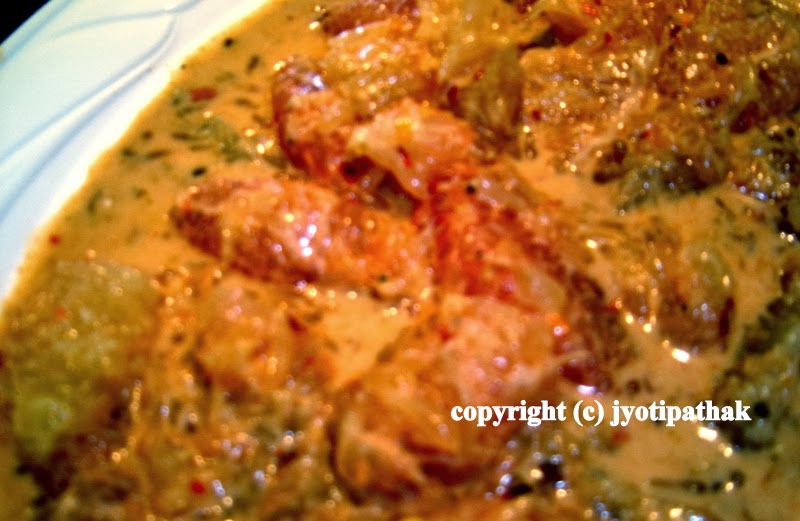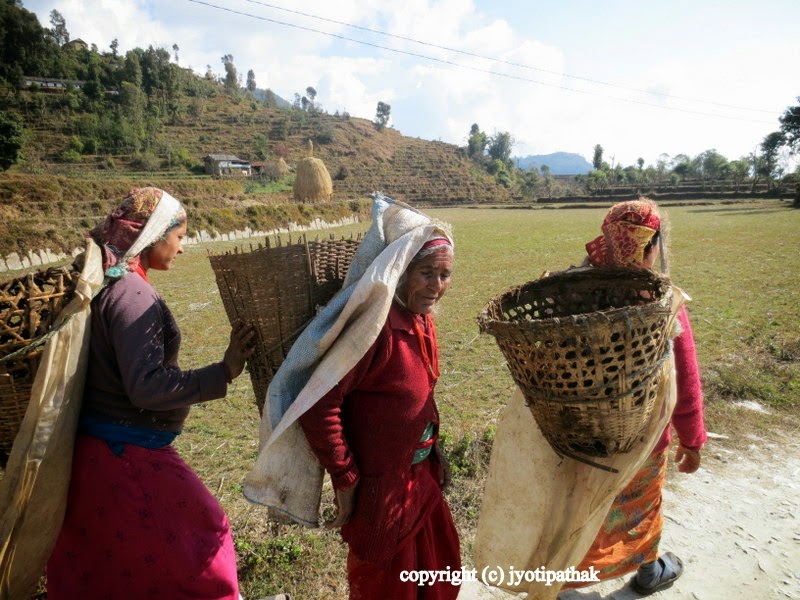The Tikaa and Jamaraa of Bijaya Dashami
Happy Bijaya Dashami 2014 (Ashwin 2071 - Nepali calender, Bikram Sambat).
विजया दशमी (२०७१) तथा शुभ दिपावलीको शुखदउपलक्षमा हार्दिक मंगलमय शुभकामना अर्पण गर्दछु!
Happy Bijaya Dashami 2014 (Ashwin 2071 - Nepali calender, Bikram Sambat).
विजया दशमी (२०७१) तथा शुभ दिपावलीको शुखदउपलक्षमा हार्दिक मंगलमय शुभकामना अर्पण गर्दछु!
 |
| photo credit - Tikaa-jamaraa of Dashain |
I would like to wish "Taste of Nepal Blog" readers a very Happy Bijaya Dashami
बिजया दशमी!
May the warmth and joy of Bijaya Dashami fill your heart and home with happiness. Thank you for stopping by. I invite you to experience a cultural, social, and religious exchange during the 15-day long, most auspicious, festival of Nepal.बिजया दशमी!
As we approach the Bijaya Dashami or Bada Dashain (2014) soon, I would like to celebrate the festival by uploading images focused on the tenth day of the festival. Nepalese festivals are dated according to the traditional "religious Lunar Calendar." This year, Bijaya Dashami starts on September 25, 2014 with Ghatsthapana and ends on October 3, 2014 with Tikaa. During this period, you will see people throughout the country in a festive mood, walking with red tikaa on their forehead and jamaraa (barley grain sprouts) tucked behind their ears or pinned in the hair.
The tenth and the main day of the Dashain festival (Dashami) is considered very important and auspicious. On that day, a special thick red paste is prepared by mixing bright red vermillion powder, plain yogurt, and white rice grain. Some people even add a pinch of sugar into the paste to make it shiny and fresh. Sugar also acts as bonding agent while applying the tikaa in the forehead. This mixture is called acheeta ko raato tikaa - (अछेता को टिका). In general, parents or the elders of the family or relatives give tikaa and jamaraa (जमरा) to junior and younger relatives who come for their blessings.
The tikaa is applied in the middle of the forehead gently by using the tip of three fingers. Great care is taken to make a perfect round shaped tikaa and making sureit is sticking on the forehead for the entire day. The red color of tikaa signifies "shakti" (strength). It is believed to bring spiritual wisdom, good health, peace and prosperity in ones life. It also symbolizes good luck, happiness and healing. Along with the achheta ko tikaa and jamaraa, people receive dakshinaa, which is blessed money for good luck. After applying tikaa, the golden-yellow shoots, jamaraa, are carefully placed over the head or tucked behind the ear of recipients. It is also very common to see some women neatly tie the shoots into small bundles and secure in their head with hair pin. Some people chant Sanskrit Vedic slokas or give aashirbaad blessings while applying the tikaa. The following are the most common slokas.
ॐ जयन्ती मङ्गला काली भद्रकाली कपालिनी ।
(Om Jayanti Mangala Kaali Bhadra Kali Kapalini)
(Om Jayanti Mangala Kaali Bhadra Kali Kapalini)
दुर्गा क्ष्यमा शिवा धात्री स्वहा स्वधा नमोस्तु ते ।।
(Durga Kshyama shiva dhatri swaha swadha namostu te)
(Durga Kshyama shiva dhatri swaha swadha namostu te)
Dashain Tikaa and Ashirvad(blessing -- Mangal Dhoon)
| Jamaraa tied into small bundles are for sale at a local market during auspicious tikaa day |
Here are some excerpts from "visit Nepal" page about Dashain festival and Ghatasthapana.
"The first day of Dashain is called Ghatasthapana, which literally means pot establishing. On this day the kalasha, (holy water vessel) symbolizing goddess Durga often with her image embossed on the side is placed in the prayer room. The kalasha is filled with holy water and covered with cow-dung on to which seeds are sown. A small rectangular sand block is made and the kalasha is put in the center. The surrounding bed of sand is also seeded with grains. The ghatasthapana ritual is performed at a certain auspicious moment determined by the astrologers. At that particular moment the priest intones a welcome, requesting goddess Durga to bless the vessel with her presence.
The room where the kalasha is established is called 'Dashain Ghar'. Generally women are not allowed to enter the room where Dashain puja is being carried out. A priest or a household man worships the kalasha everyday once in the morning and then in the evening. The kalasha and the sand are sprinkled with holy water everyday and it is shielded from direct sunlight. By the tenth day, the seed will have grown to five or six inches long yellow grass. The sacred yellow grass is called 'Jamaraa'. It is bestowed by the elders atop the heads of those younger to them during the last five days when tikaa is put on. The jamaraa is taken as a token of Goddess Durga as well as the elders blessing......continue reading more here.
He writes, "I wish all my friends and relatives a very happy Vijaya Dasami. May the Goddess Durga bestow on you and your loved ones good health and happiness. It’s my hope that we are able to celebrate this holiday together for many more years to come by wearing red acheta on our foreheads.
I hope you know the deep significance of the red acheta and the golden jamara. Why do our elders give them to us? They are meant to signify the goodness of the earth. For example, the golden jamara represents green plants that grow on soil and acheta is made out of rice that we eat for nourishment. Together they are the symbol of life and the earth’s bounty. When mixed with the red powder it not only looks pretty on our forehead, but also stands for the life giving blood that gushes through our veins. With the acheta and jamara we are blessed by our elders that our lives be as rich as the rice and as green as the fields. That indeed is a beautiful symbolism. We should be proud that we have such a beautiful culture, and it’s our duty to pass it on to our children and our children’s children.
Vijaya Dasami is a celebration of victory over evil through the enactment of the Goddess Durga’s mythical battle with the evil forces of the demon Mahishasura. It took nine days for the Goddess to slay the demon. On the tenth day, Goddess Durga’s victory was celebrated as described in the sacred text of the Devi Mahatmya. And this is called the Vijaya Dasami. It can be understood from many philosophical levels, such as conquering our own inner demons. And conquering is not easy. If it took nine days for the great Goddess to win the battle, imagine how long it might take for the humans. Nevertheless, we should try to slay our inner demons if we want to live a happy life. I have been trying for many years. I finally feel that I am getting closer. Happy Vijaya Dasami to all".
"The first day of Dashain is called Ghatasthapana, which literally means pot establishing. On this day the kalasha, (holy water vessel) symbolizing goddess Durga often with her image embossed on the side is placed in the prayer room. The kalasha is filled with holy water and covered with cow-dung on to which seeds are sown. A small rectangular sand block is made and the kalasha is put in the center. The surrounding bed of sand is also seeded with grains. The ghatasthapana ritual is performed at a certain auspicious moment determined by the astrologers. At that particular moment the priest intones a welcome, requesting goddess Durga to bless the vessel with her presence.
The room where the kalasha is established is called 'Dashain Ghar'. Generally women are not allowed to enter the room where Dashain puja is being carried out. A priest or a household man worships the kalasha everyday once in the morning and then in the evening. The kalasha and the sand are sprinkled with holy water everyday and it is shielded from direct sunlight. By the tenth day, the seed will have grown to five or six inches long yellow grass. The sacred yellow grass is called 'Jamaraa'. It is bestowed by the elders atop the heads of those younger to them during the last five days when tikaa is put on. The jamaraa is taken as a token of Goddess Durga as well as the elders blessing......continue reading more here.
--------------------
Another interesting article on "Tikaa and Jamaraa: Adding Color to Dashain" by Shreeya Joshi, ECS magazine, Nepal. She writes... "The celebration of Dashain begins with the ceremonial Ghatasthapana. It marks the first day of the festival and is the day that barley seeds are planted in a specially purified place (the prayer room of one’s home in a majority of cases). The eldest member of the house spreads sand, brought from the banks of a holy river, on a place specifically chosen for this purpose and sows barley seeds in it. For nine days, this ‘plantation’ area is covered with an earthen pot and watered every day. On the ninth day, the five to six-inch-long seedlings, which take on a yellow-green hue due to being constantly kept away from sunlight, are ready for plucking. It is said that these seedlings hold all of Goddess Durga’s blessings and so are placed on the heads of all members the immediate family as well as that of relatives, bestowing on them fortune, well being and prosperity".... continue reading more here ..--------------------
Here is another interesting article by Dr. Deepak Shimkhada, a noted scholar in South Asian art, culture and religions - Professor at Claremont Graduate University, CAHe writes, "I wish all my friends and relatives a very happy Vijaya Dasami. May the Goddess Durga bestow on you and your loved ones good health and happiness. It’s my hope that we are able to celebrate this holiday together for many more years to come by wearing red acheta on our foreheads.
I hope you know the deep significance of the red acheta and the golden jamara. Why do our elders give them to us? They are meant to signify the goodness of the earth. For example, the golden jamara represents green plants that grow on soil and acheta is made out of rice that we eat for nourishment. Together they are the symbol of life and the earth’s bounty. When mixed with the red powder it not only looks pretty on our forehead, but also stands for the life giving blood that gushes through our veins. With the acheta and jamara we are blessed by our elders that our lives be as rich as the rice and as green as the fields. That indeed is a beautiful symbolism. We should be proud that we have such a beautiful culture, and it’s our duty to pass it on to our children and our children’s children.
Vijaya Dasami is a celebration of victory over evil through the enactment of the Goddess Durga’s mythical battle with the evil forces of the demon Mahishasura. It took nine days for the Goddess to slay the demon. On the tenth day, Goddess Durga’s victory was celebrated as described in the sacred text of the Devi Mahatmya. And this is called the Vijaya Dasami. It can be understood from many philosophical levels, such as conquering our own inner demons. And conquering is not easy. If it took nine days for the great Goddess to win the battle, imagine how long it might take for the humans. Nevertheless, we should try to slay our inner demons if we want to live a happy life. I have been trying for many years. I finally feel that I am getting closer. Happy Vijaya Dasami to all".
| Jamaraa - the sacred sprouted barley grains (जौ - jau Nepali) |
| Dakshinaa (दक्षिना), the auspicious coin or blessed money - used as a gift during tikaa ceremony |
Here are some pictures that I captured about the spirit of Dashain festival. I carried a small digital camera and walked toward the narrow alleys around Asan galli, Hanuman Dhoka, Nardevi area and other Kathmandu streets to take pictures of "tikaa-jamaraa of dashain." Every single person who passed me just had a family celebration in the auspicious hour in the morning. They had a big red tikaa in their forehead and golden jamaraa in their head. The streets were so lively, crowded, and colorful. Children were dressed in their best clothes with new shoes, women were adorned with jewelry and best clothes. I politely asked the passerby their permission to take pictures and found them so welcoming. Some even posed for a picture with charming smile - a real festive mood around the streets. Some young girls even wanted to see how the pictures came out. There were so many nice memories and photographing such a cultural event of Nepal was the most exciting day of my life. I truly hope you enjoy the uploaded photo captures from my camera. If you ever get a chance to visit Dashain festival of Nepal, you will find a great festive atmosphere.
| Visiting elders and getting tikaaduring Bijaya Dashami ceremony -- the elders give aashirbad (blessing) by reciting vedic slokas (Sanskrit poetry) or mantras |
| A women from the middle hills is happy to be photographed, and proudly showing me her Dashain ko auspicious tikaa. |
| A mother and her young son - walking in the festive mood in the street of Kathmandu - welcoming relatives and everything in between |
| Such a joyous time - "family gathering is the most loved part of this festival" says this lady. |
| The good humored man is happy to pose for a picture. He has a black tikaa along with the achhetaa ko tikaa on his forehead. The black tikaa is to ward off the evil spirit. Fresh barley shoots are tucked in his bhadgaunle topi (a traditional black Nepali hat). |
| Warm greetings from the lady in black - celebrating and giving tikaa during Nhoodaya Bhintuna ( |
| Three little girls with their faces shinning with acheetaa ko tikaa on the forehead- posing for a picture and showing their traditionalhaakusi pataasi (hand woven black and red Newari attire) during Nhoodaya Bhintuna ( |
| On the way to a temple with golden jamaraa... |
Warm greetings from the lady in Nepali dhaakaa-ko-cholo andtikaa in her forehead. "I must be known to every person who comes to Maru Ganesthan area," says this beautiful lady with smile. "I sit here and observe the scene and some times the passing tourist capture my picture, just like you have." She has a small stall to sell freshly sliced bamboo shoots, dried fish, and dried gundruk. |
| ....the color of Dashain everywhere |
| In this picture, the auspicious golden jamaraa is carefully tucked in the back of the hair with a pink pin |
At Kot courtyard (near Hanuman Dhoka) in Kathmandu - a large pot of freshly sprouted jamaraa along with other sacred offerings is ready for Dashain festival celebration |
| A women is receiving tikaa and jamaraa from a priest at a temple - generally, people who do not have elder relatives, usually receive tikaa from the priests. |
| I hope these tikaa-jamaraa images of the Nepalese people from their land of Gods will delight, inspire and captivate you and hopefully you will celebrate the cultural life of the country. |
| Image of two women putting tikaa on the forehead of a priest |
 |
| A happy young girl with large tikaa in her forehead - notice her jamaraa is carefully secured with a hair pin - photo credit - ekantipur |
I hope you have had much fun as I have, putting together images of the cheerful and much-anticipated religious festival of Nepal. Please drop me a few lines in the comments section of the blog. Your comments and feedback are important and I would love to hear from you.
Copyright Information
All information on the Taste of Nepal blog are restricted use under copyright law. You may not re-use words, stories, photographs, or other posted material without the explicit written consent and proper credit to Jyoti Pathak. If you would like to use any materials here, please contact me.

















%2B019.jpg)









+291.jpg)



+056.jpg)
+015.jpg)





+650.jpg)
+493.jpg)








